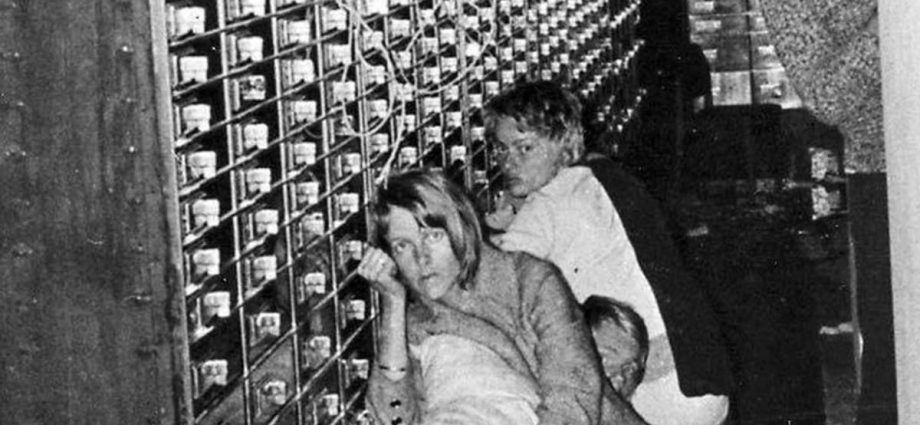He is a monster who took an innocent girl hostage, she is the one who, despite the horror of the situation, was able to feel sympathy for the aggressor and look at what was happening through his eyes. A beauty who loves a monster. About such stories — and they appeared long before Perrault — they say «as old as the world.» But it was only in the second half of the last century that a strange connection between the characters got a name: Stockholm syndrome. After one case in the capital of Sweden.
ឆ្នាំ 1973 ទីក្រុង Stockholm ដែលជាធនាគារធំបំផុតរបស់ប្រទេសស៊ុយអែត។ Jan-Erik Olsson ជាឧក្រិដ្ឋជនដែលបានរត់ចេញពីគុក ចាប់ចំណាប់ខ្មាំងជាលើកដំបូងក្នុងប្រវត្តិសាស្ត្ររបស់ប្រទេស។ ការជម្រុញគឺស្ទើរតែថ្លៃថ្នូ៖ ដើម្បីជួយសង្គ្រោះអតីតមិត្តរួមកោសិកា Clark Olofsson (ល្អបន្ទាប់មកវាជាស្តង់ដារ៖ មួយលានដុល្លារនិងឱកាសដើម្បីចេញ) ។ Olofsson ត្រូវបានគេនាំទៅធនាគារ ឥឡូវមានពីរនាក់ក្នុងចំណោមពួកគេ ដោយមានចំណាប់ខ្មាំងជាច្រើននាក់ជាមួយពួកគេ។
បរិយាកាសគឺភ័យ ប៉ុន្តែមិនមានគ្រោះថ្នាក់ខ្លាំងពេកទេ៖ ឧក្រិដ្ឋជនស្តាប់វិទ្យុ ច្រៀង លេងបៀរ តម្រៀបរបស់របរ ចែកអាហារជាមួយជនរងគ្រោះ។ អ្នកញុះញង់ Olsson គឺមិនទំនងទាល់តែសោះ ហើយជាទូទៅគ្មានបទពិសោធន៍ ហើយនៅដាច់ដោយឡែកពីពិភពលោក ចំណាប់ខ្មាំងចាប់ផ្តើមបង្ហាញពីអ្វីដែលអ្នកចិត្តសាស្រ្តនៅពេលក្រោយហៅថាអាកប្បកិរិយាមិនសមហេតុផល ហើយព្យាយាមពន្យល់ថាជាការលាងខួរក្បាល។
ជាការពិតណាស់មិនមានទឹកហូរទេ។ ស្ថានភាពនៃភាពតានតឹងដ៏មានឥទ្ធិពលបំផុតបានចាប់ផ្តើមយន្តការមួយនៅក្នុងចំណាប់ខ្មាំងដែល Anna Freud ត្រឡប់មកវិញក្នុងឆ្នាំ 1936 បានហៅថាការកំណត់អត្តសញ្ញាណជនរងគ្រោះជាមួយនឹងអ្នកឈ្លានពាន។ ទំនាក់ទំនងដ៏គួរឱ្យតក់ស្លុតបានកើតឡើង៖ ចំណាប់ខ្មាំងចាប់ផ្តើមអាណិតអាសូរដល់ភេរវករ ដើម្បីបង្ហាញអំពីភាពត្រឹមត្រូវនៃសកម្មភាពរបស់ពួកគេ ហើយនៅទីបញ្ចប់មួយផ្នែកបានទៅខាងពួកគេ (ពួកគេទុកចិត្តអ្នកឈ្លានពានច្រើនជាងប៉ូលីស) ។
All this «absurd but true story» formed the basis of Robert Boudreau’s film Once Upon a Time in Stockholm. Despite the attention to detail and the excellent cast (Ethan Hawke — Ulsson, Mark Strong — Oloffson and Numi Tapas as a hostage who fell in love with a criminal), it turned out not too convincing. From the outside, what is happening looks like pure madness, even when you understand the mechanism for the emergence of this strange connection.
រឿងនេះកើតឡើងមិនត្រឹមតែនៅក្នុងតុដេកធនាគារប៉ុណ្ណោះទេ ប៉ុន្តែក៏មាននៅក្នុងផ្ទះបាយ និងបន្ទប់គេងនៃផ្ទះជាច្រើនជុំវិញពិភពលោកផងដែរ។
Specialists, in particular, psychiatrist Frank Okberg from the University of Michigan, explain its action as follows. The hostage becomes completely dependent on the aggressor: without his permission, he cannot speak, eat, sleep, or use the toilet. The victim slides into a childish state and becomes attached to the one who «takes care» of her. Allowing a basic need to be met generates a surge of gratitude, and this only strengthens the bond.
Most likely, there should be prerequisites for the emergence of such dependence: the FBI notes that the presence of the syndrome is noted only in 8% of the hostages. It would seem not so much. But there is one «but».
Stockholm Syndrome មិនគ្រាន់តែជារឿងអំពីការចាប់ចំណាប់ខ្មាំងដោយឧក្រិដ្ឋជនដ៏គ្រោះថ្នាក់នោះទេ។ ការប្រែប្រួលជាទូទៅនៃបាតុភូតនេះគឺរោគសញ្ញា Stockholm ប្រចាំថ្ងៃ។ រឿងនេះកើតឡើងមិនត្រឹមតែនៅក្នុងតុដេកធនាគារប៉ុណ្ណោះទេ ប៉ុន្តែក៏មាននៅក្នុងផ្ទះបាយ និងបន្ទប់គេងនៃផ្ទះជាច្រើនជុំវិញពិភពលោកផងដែរ។ ជារៀងរាល់ឆ្នាំ ជារៀងរាល់ថ្ងៃ។ ទោះជាយ៉ាងណាក៏ដោយ នេះគឺជារឿងមួយទៀត ហើយយើងមានឱកាសតិចជាងមុនក្នុងការមើលវានៅលើអេក្រង់ធំ។










